It’s not just the global pandemic that made everyone obsessed with eLearning. Unpredictable work hours, frequent business trips, unreliable public transport, household chores — all of these things render it impossible for many people to visit in-person classes.
The demand for online courses is skyrocketing. The eLearning market in the US is expected to grow by 36.5 billion dollars during 2022-2025. So, if you are planning to launch your first eLearning product this year, the timing couldn’t have been better.
The question is, how do you go from chaotic docs and video drafts on your PC to a full-speed educational business? We will provide you with a step-by-step plan on how to start an eLearning business, real-world examples, and actionable tips to make sure you start off on the right foot.
What is an eLearning business?
Before we go any further, let’s define what it is that you are planning to build. eLearning business is a business that delivers educational materials or courses online. Just like any other business, it usually has its unique branding, positioning, and other distinctive components.
Skillshare is a perfect example of a successful eLearning business.
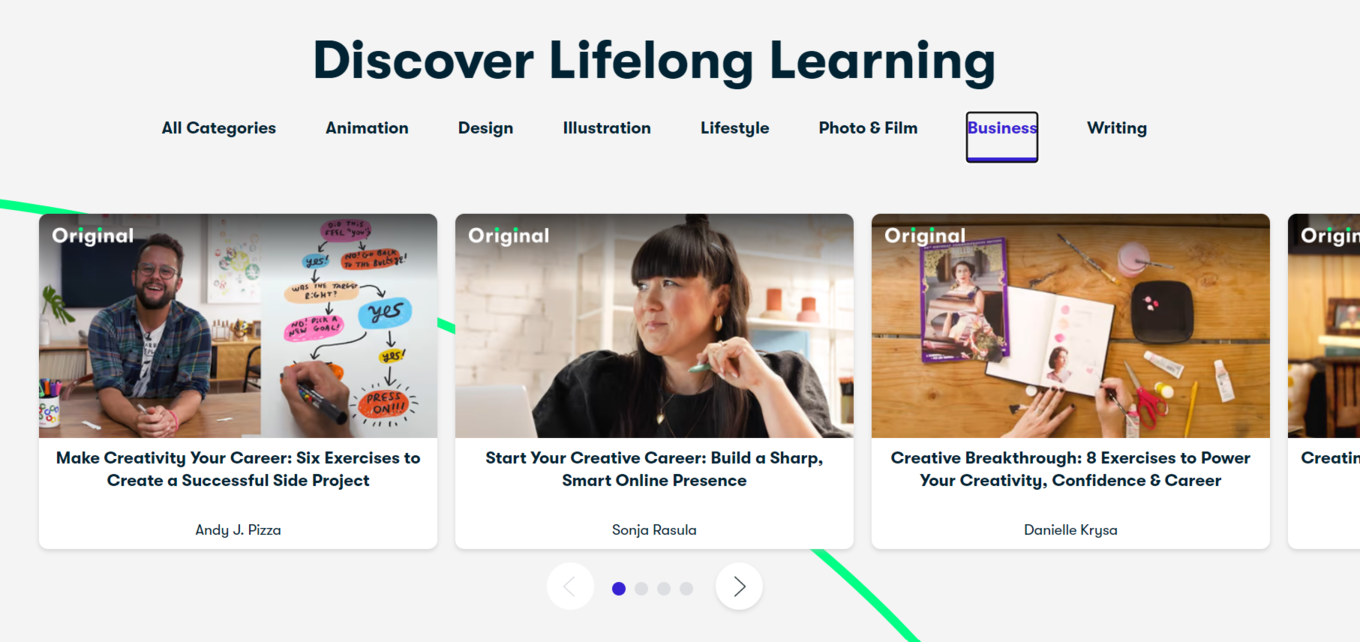 Skillshare is an example of a successful eLearning business
Skillshare is an example of a successful eLearning business
eLearning doesn’t always mean self-paced learning. It’s also common to sell instructor-paced courses as well as downloadable educational assets that have no expiration date.
You can start an online training business completely by yourself — there are enough intuitive online course builders out there allowing you to create, edit, and publish your lessons. That being said, having a designer, a video editor, and a marketer on your side will bring your courses to the next level.
Before you launch your educational business, make sure to check out our guide on how to build online courses!
Corporate learning makes up a big portion of the eLearning market, but launching B2B educational products requires established expertise, influence, and reputation. In this post, we’ll mostly be focusing on B2C eLearning, that is, on how to start teaching niche skills or hobbies online and earning money from it.
8 reasons to start your eLearning business now
41% of graduate students reported that they found their online college-level education to be better than the same classes taught in person. How could this be? Turns out, eLearning beats the traditional learning format in many ways:
- Diverse toolkit. Quizzes, group chats, activities, tests, certificates of completion, other features, and gamification tools will boost your students’ interest and engagement.
- Personalization. Spark your students’ motivation by allowing them to track and measure their progress and reach their personal milestones.
- Customization. Only you decide how your virtual classroom will look and how your curriculum will be structured.
- Reliability. Easily receive payments and build a stable source of income by selling on-demand courses.
- Cost-efficiency. Using an online course platform is more affordable than renting a space, wasting time on commutes, etc.
- Availability. Learners from all over the world can start, pause, and revisit your courses at any time, so you can tap into new markets.
- Transparency. Analyze your students’ performance, collect feedback, and improve your courses to suit their needs better.
- Borderlessness. You can hire the best talents to teach at your online school instead of limiting your search to one city.
As we transition towards the gig economy and hybrid work, the necessity to travel every day to sit in a physical classroom for an hour quickly becomes obsolete. Online learning helps both students and teachers increase their productivity and unlock new opportunities without having to leave their cozy homes.
How to choose the right online learning business model
Before jumping to the production phase, you need to figure out how to package, price, and sell your educational products. We’ll describe three of the most common eLearning business models and look at their advantages and drawbacks.
Selling individual courses for one-time payments
If you are working on your first courses and just planning on creating a full-scale online school, this model may be a good choice for you, especially if some of these points apply to your business:
- your educational products are not tightly interconnected;
- each of your courses teaches one specific skill;
- it takes less than a month to complete one course.
With this eLearning business model, you don’t need to postpone the launch until you have tons of content. You can start monetizing your knowledge immediately and adjust your strategy as your brand grows. What’s even better is the fact that the same business model also works for giants of eLearning such as Coursera.
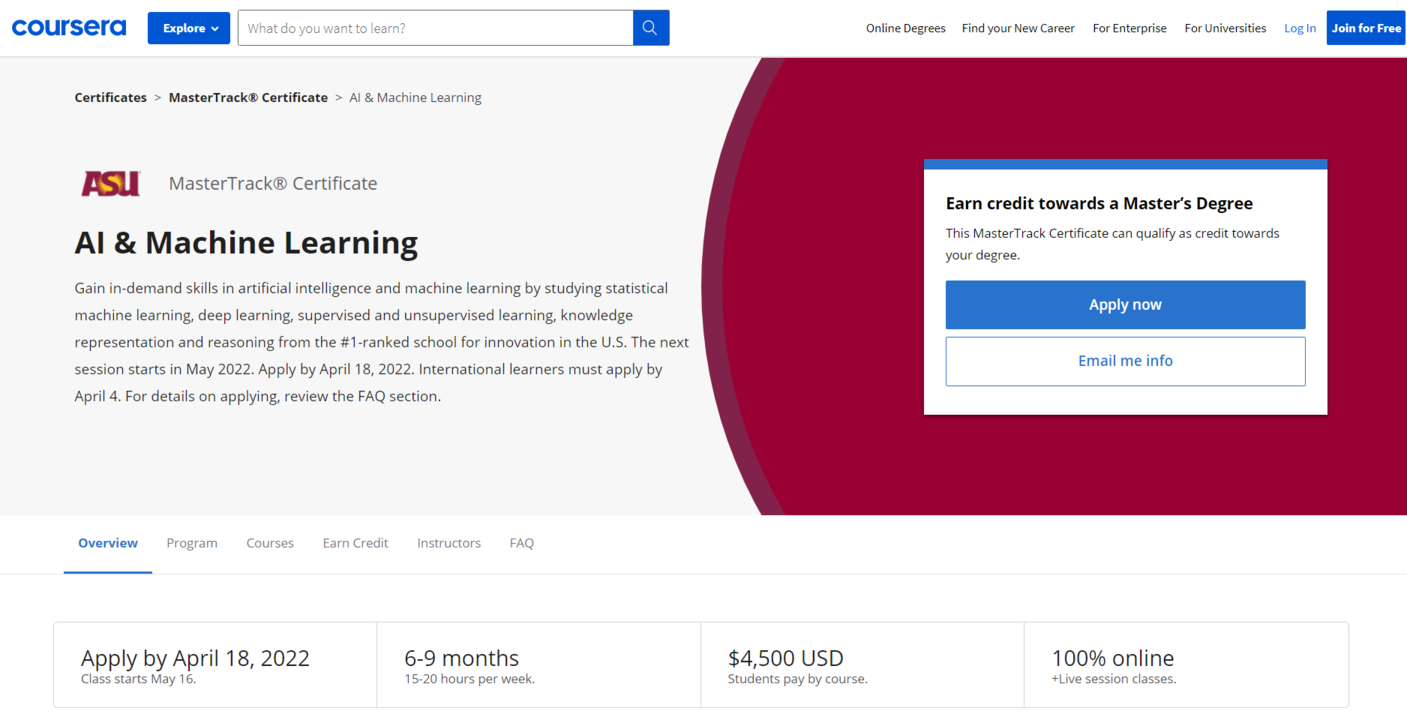 Coursera sells individual courses and charges one-time payments
Coursera sells individual courses and charges one-time payments
You can charge a one-time fee for single lessons, course series, or bundles. Usually, this business model implies that you grant your students a completion certificate and lifetime access to the contents of the course they’ve purchased.
The only downside of this model is that it doesn’t encourage students to keep coming back to you for more and, as a result, you get occasional spikes in sales instead of a steady stream of revenue. But you can fix it by publishing new content on a regular basis and nurturing your audience with the help of email marketing automation.
Selling learning subscriptions
If your notebook is packed full of ideas for new courses and you have resources to produce them consistently, consider choosing the subscription-based eLearning business model for your online school. This way, you’ll be selling temporary access to your educational products for a smaller but recurring fee.
Skillshare, for example, offers a premium subscription that gives users access to thousands of online classes. The platform also has a free trial and a referral program — both are steal-worthy features for any eLearning business operating on a subscription basis.
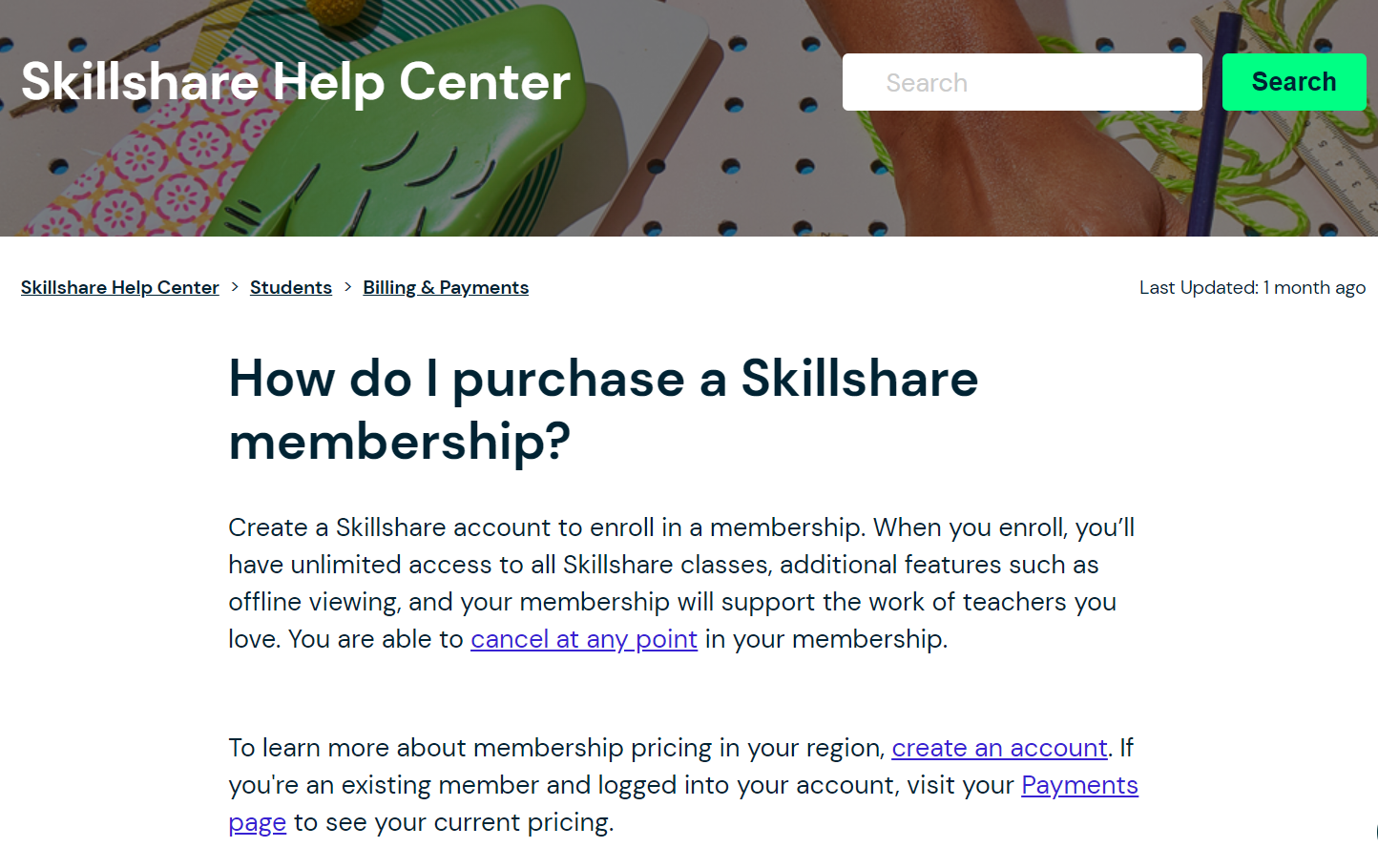 Skillshare uses a subscription-based business model
Skillshare uses a subscription-based business model
This model has an obvious disadvantage — you can’t expect an immediate return on investment unless you focus on selling annual subscriptions. And to be able to do that, you need months’ worth of content and, once again, a nurturing email campaign in place to keep your long-term students engaged.
Combining one-time fees and subscriptions
Alternatively, you can take the best of both worlds by merging together the eLearning business models we’ve described above. Sell exclusive courses, eBooks, guides, kits, workshops, tutorials, or packs for a fixed price while also offering subscriptions with access to all of your basic courses. Your students will love the flexibility of this model and being able to pay just for the content they need.
Domestika uses this very model. Its users can purchase a premium subscription to unlock exclusive perks, lifetime access to purchased courses, and extra savings, but they’ll still have to pay for individual courses, although not as much as users without a premium account.
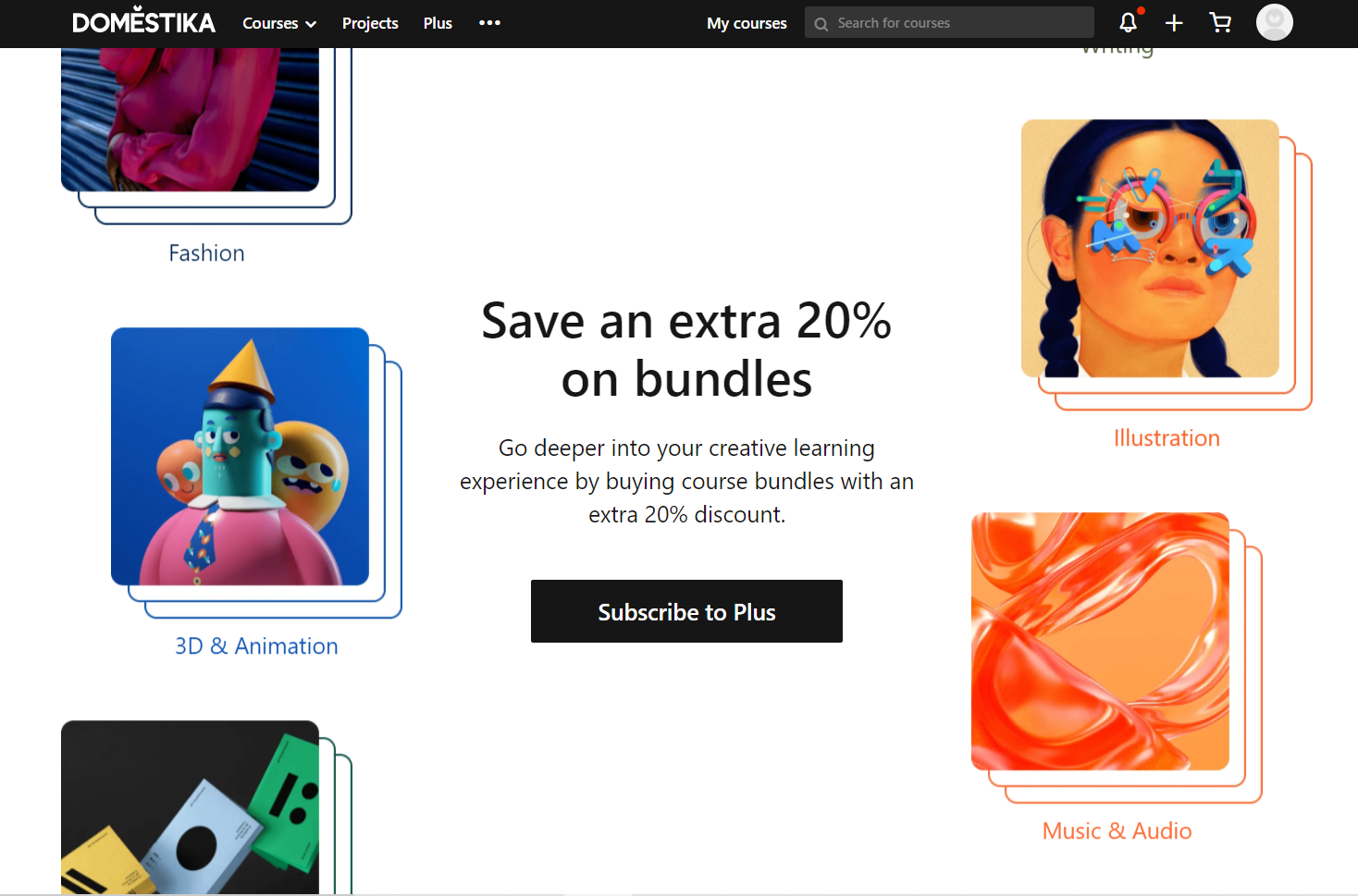 Domestika Plus allows its students to enjoy premium perks and save money on courses
Domestika Plus allows its students to enjoy premium perks and save money on courses
This hybrid eLearning business model incentivizes students to invest in long-term memberships and extract maximum value during the paid period. It also ensures that you as an owner get stable earnings by profiting from published on-demand products. The only downside is that this approach is more advanced and thus harder to implement.
How to start an eLearning business in 8 steps
Once you’ve decided to set your goals in motion, follow these key steps to launch an educational business that will last.
Define your target audience
The first step is to describe your potential students. It will help your target the right audience and make sure they will be satisfied with your courses and spread the word to their peers.
Start their portrait by specifying their:
- demographics;
- learning goals;
- fears and concerns;
- current level of proficiency;
- budget;
- lifestyle.
Feel free to edit this customer profile after communicating with your first real students and gaining more insights. You don’t have to keep this description to yourself — in fact, it’ll be even more useful if you reverberate it on your course landing page.
Here’s how The Honey Bee Society promotes its online beekeeping theory courses. This copy precisely targets those who are new to beekeeping and confused as to where they should start.
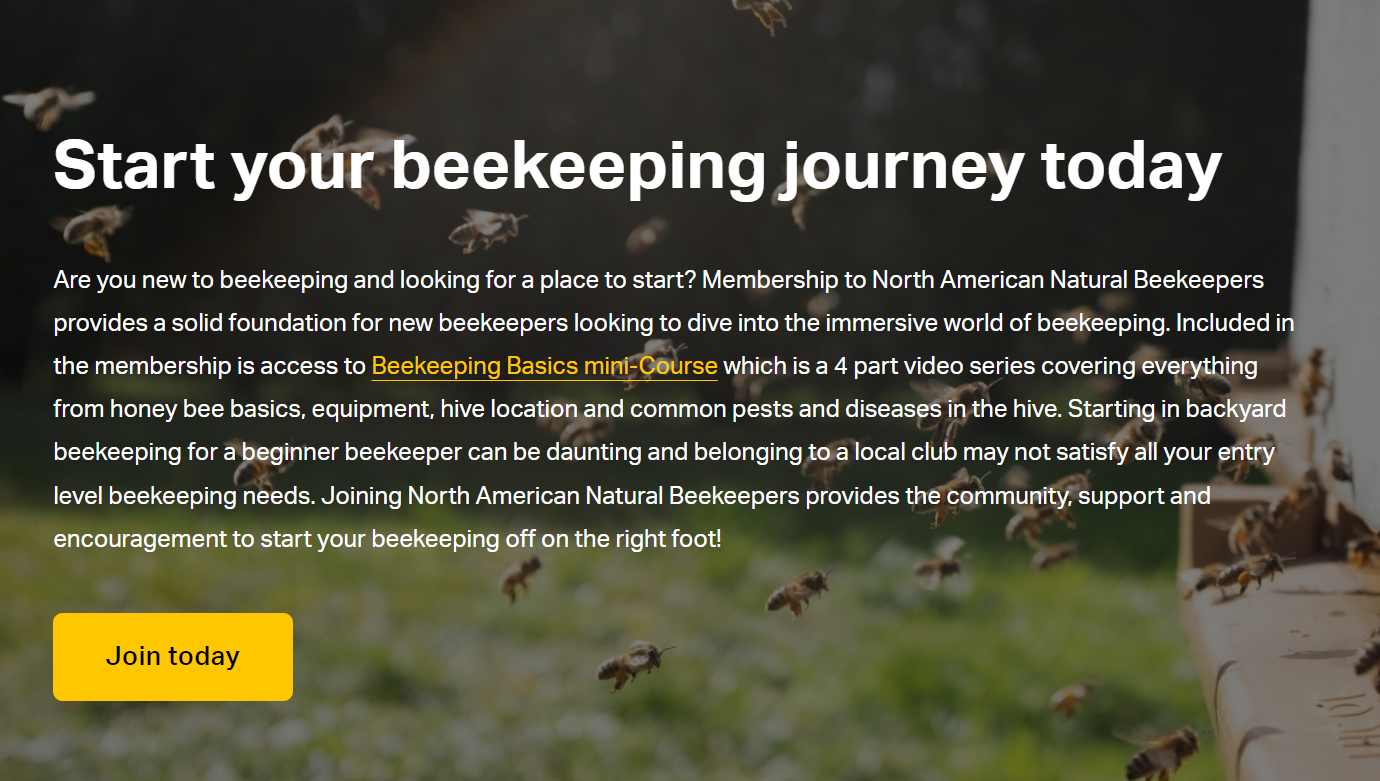 The Honey Bee Society speaks directly to its target audience
The Honey Bee Society speaks directly to its target audience
The main idea here is to convince your website visitors that your course is tailored exactly for them. By addressing your key audience and their pain points and interests directly, you’ll make them feel seen and understood.
Develop your curriculum
What makes people pay for online courses when every type of expert content seems to be available on YouTube for free? The answer is structure. Well-structured, sequential in-depth content on social media is hard to come by because trends change so fast that creators just can’t afford to get stuck on the same topic.
Use this to your advantage by making sure your lessons are systematically organized and logically connected. Prepare relevant handouts, spreadsheets, exercises, or quizzes for each lesson. To see how it’s done, head to Udemy — its courses always have a clear logical structure.
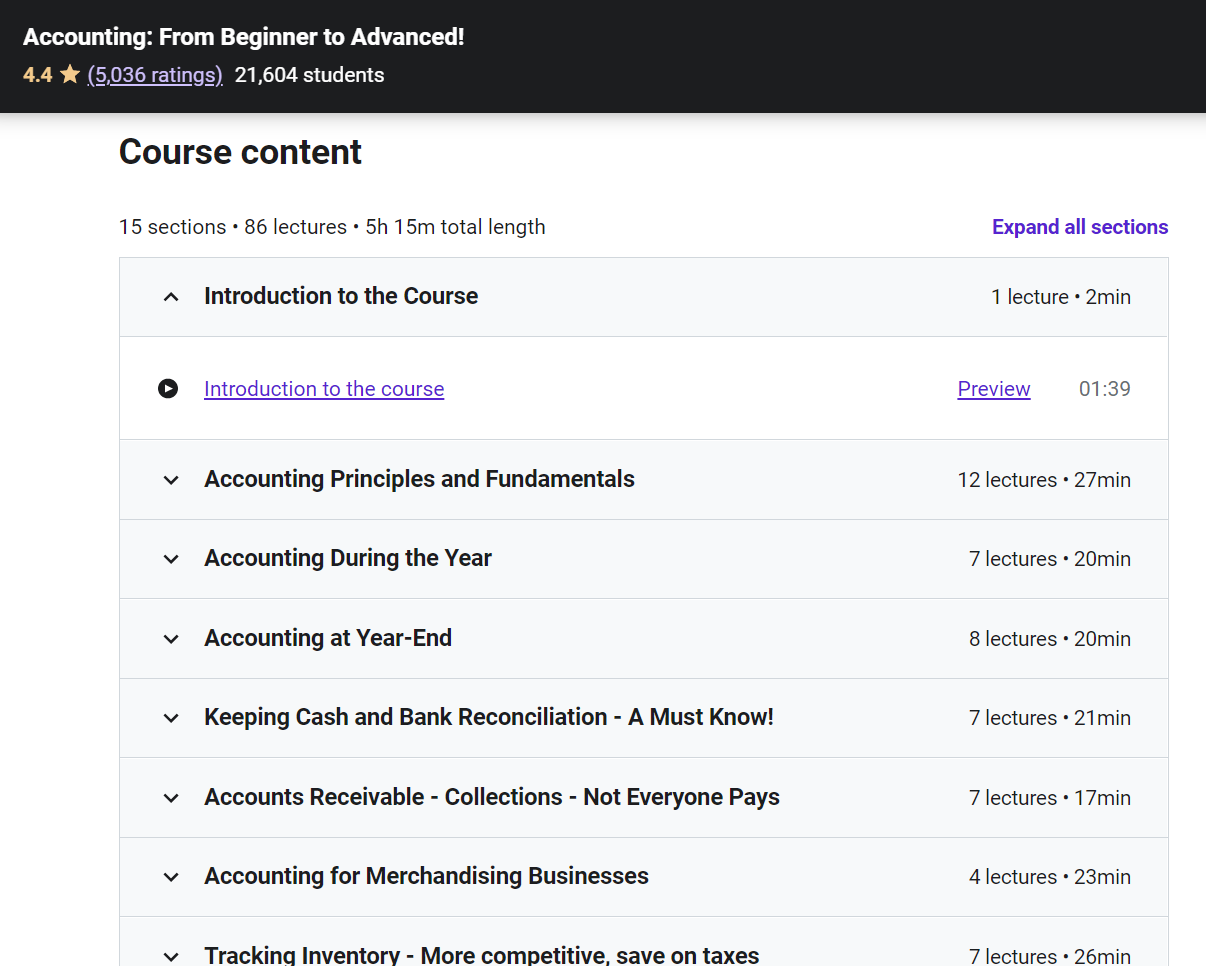 An example of an Udemy course curriculum
An example of an Udemy course curriculum
There are three main approaches to building a curriculum: subject-centered, learner-centered, and problem-centered. You’ll be able to choose the right one for your eLearning business after analyzing your students’ goals and expectations.
Work on your positioning
The online learning market is quite saturated, so your brand has to stand out from day one. Brand positioning for an eLearning business means finding a unique angle, shaping a value proposition so that it will inevitably draw new students in.
Here’s how the language-learning platform Lingoda positions itself.
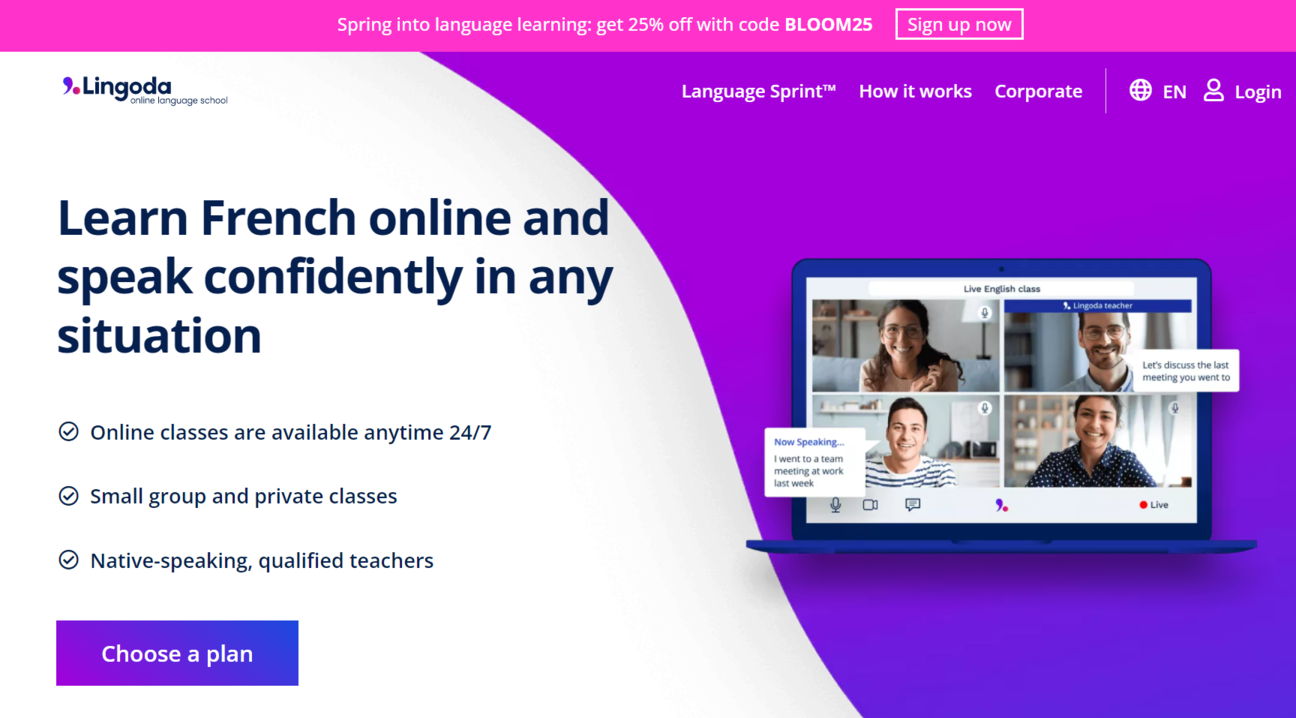 Lingoda’s brand positioning
Lingoda’s brand positioning
Lingoda puts emphasis on its flexibility and high-effort-high-reward approach. This positioning effectively distinguishes the platform from the competition and helps the Lingoda teachers attract the most dedicated students.
Craft unique positioning for your eLearning brand with the help of competitor analysis tools!
Keep in mind that your positioning will directly affect your pricing and vice versa. An exclusive, time-limited online course taught by an industry rockstar can easily be sold for $1,000 and higher, whereas a self-made course hosted by a local influencer, valuable as it is, will require a more down-to-earth price tag.
The times when every digital product had to be built from scratch are long gone. There are plenty of intuitive online course platforms out there offering video hosting as well as code-free editing and marketing tools. They allow you to turn existing visual and text-based materials into professional-looking courses within minutes.
We are about to launch our own online course builder, made with creators, entrepreneurs, and HR managers in mind. Sign up for early-bird access!
Your ideal eLearning platform should provide you with enough flexibility and control. Before investing in any particular solution, ask yourself a few questions:
- Does it allow you to create and host a full-scale branded online school?
- Are there enough interactive features to keep students motivated?
- How easy is it to receive and withdraw money from this platform?
- Can you track your course sales and analyze your students’ performance in detail?
- Are there any built-in marketing tools?
- Can you do live streams on this platform?
- How many students and moderators can you add without overpaying?
- Is there a real support agent who can help you quickly solve potential problems?
With the right eLearning platform, you can guarantee your students a high-quality learning experience without having to dig deep into your pockets.
Create your first lessons and get initial feedback
At this stage, you don’t need a website yet. Before investing time and resources into that, make sure you have a viable educational product to promote in the first place.
Test your lessons by sending them to your friends or peers who are at least remotely interested in the subject you’re teaching. If you don’t have a big network, just hire niche freelancers to watch and review your lessons. Then, ask your focus group to give you extensive feedback and describe their overall impressions.
Such a simple procedure can prevent disastrous outcomes by providing you with valuable real-life insights. For example, it can help you catch potential sound issues, clarify vague definitions, or make important slides more legible. Based on that initial feedback, you will be able to adjust your course curriculum and content right before the official launch.
Create a landing page presenting your online learning business
A conversion-oriented landing page is a must for any online training business. Ideally, each of your courses should have its own page. For starters, it allows you to effectively present and describe your offer. Also, you can use your landing page to capture leads and sell your courses directly.
Be sure to include the following information in your page:
- USP;
- credentials and proof of your expertise;
- benefits and deliverables of your course;
- course curriculum;
- short informative video presenting your course;
- testimonials from previous students;
- FAQ section;
- CTA buttons;
- socials and contact information.
Here’s an example of a killer eLearning business landing page promoting online golf coaching.
An example of a landing page for an eLearning business
A perfect landing page is the one that sells your courses for you, both literally and figuratively. Use social proof, encouraging calls to action, and factual language to dispel your visitors’ doubts and show them what they will achieve after completing your course.
Start marketing your online learning business
Think about your marketing and sales funnel. How will your target audience discover your offer? Specify the most relevant channels for your eLearning brand and focus on building your presence and influence there.
Some of the most useful marketing channels for eLearning businesses include:
- social media;
- SEO;
- video blogging;
- paid ads;
- guest appearances and collaborations;
- industry events;
- networking.
If you’re just building your first online learning brand, you don’t have to worry about putting all your eggs in one basket. With limited resources, it’s reasonable to focus on one or two platforms and build a functioning funnel specifically for them instead of trying to be everywhere at the same time.
Measure the success of your students and share it
Almost every eLearning platform enables you to manage your course sales, analyze your students’ performance, and make data-driven predictions and decisions.
Besides from course completion rate, you’ll need to measure the following metrics:
- enrollments;
- sign-ups for email campaigns;
- content downloads;
- attendance rate;
- student engagement (through participation in chats and activities);
- course landing page visitors and their behavior.
Feedback forms are extremely useful for gathering student testimonials and understanding their learning journey better. Platforms like Udacity use their student success stories to illustrate the potency of their educational products.
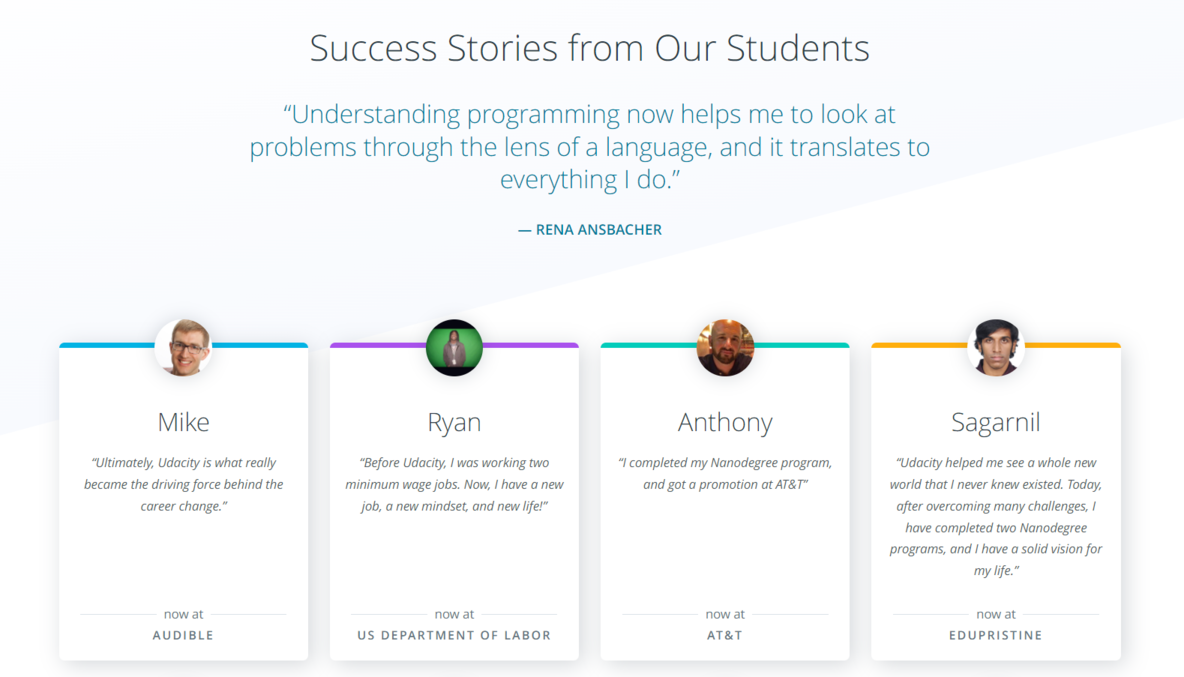 Student success stories from Udacity
Student success stories from Udacity
This type of social proof will help you win new students and demonstrate that you deliver on your promises. Also, student endorsements will boost your brand authority and credibility, which is crucial for any new business.
Ready to give your eLearning business a head start?
We have just the product for you. Sign up for early access to our new online course builder, and you’ll discover an easy yet versatile platform for creating state-of-the-art courses, onboarding programs, training series, and more.
With our solution, you can seamlessly collect payments and connect with your students through different channels. Also, you can keep track of your deals in our CRM and create landing pages, registration forms, and chatbots without ever leaving SendPulse — it’s that easy.